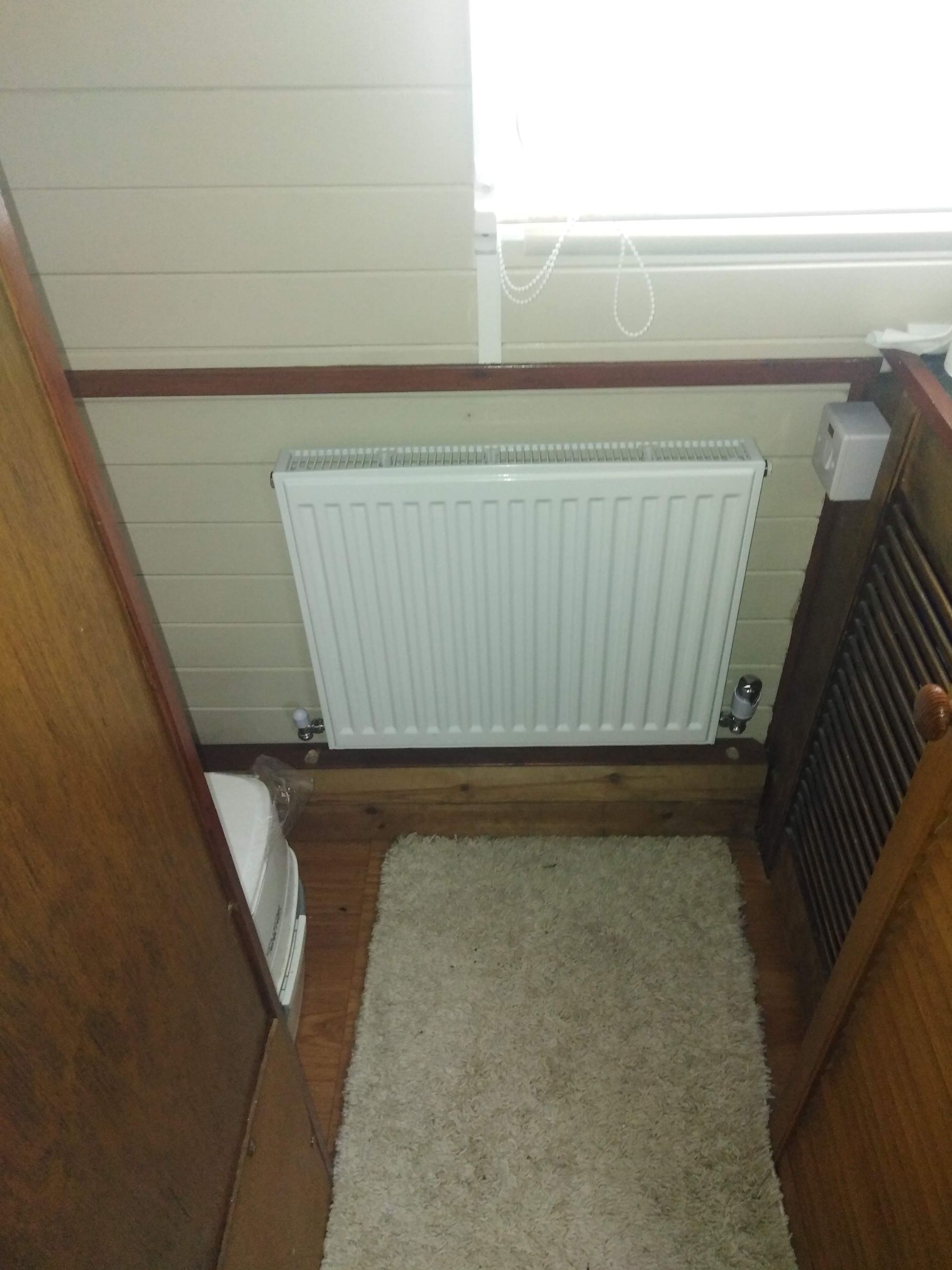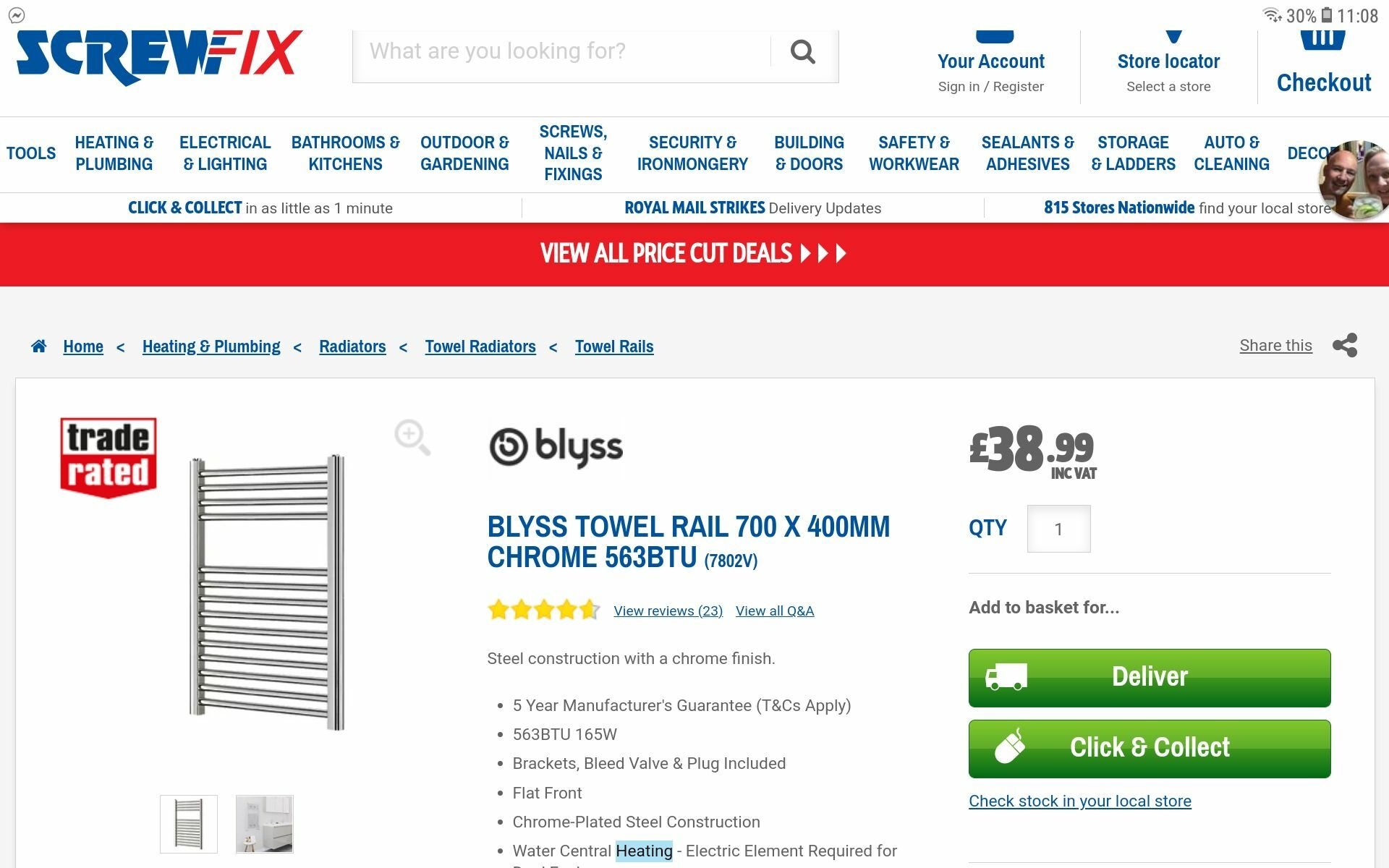-
Posts
290 -
Joined
-
Last visited
Content Type
Profiles
Forums
Events
Gallery
Blogs
Store
Everything posted by Karen Lea Rainey
-
Yes, exactly that, I think they're called Rose cottages, very private then and even more so now. The picture would have been Winter '63,
-
That's bridge 71, in it's original form, built 1908 on its parapet, to the right of the young fishermen is what was Hopleys farm, if you stood where the picture was taken, you would be opposite what is now Torc Avenue. Lived in this area all my life.
-
I listed my boat with a local broker at the start of September this year, no interest whatsoever for 4 weeks, I listed it on marketplace on Oct 6th, swamped with requests to view and questions etc, one of my potential buyers rang the broker but failed to get a reply/ answer on the tel phone. I then had a firm interested buyer travel over 100 miles to view the boat, the brokers website said opening hours on it, so 12 noon on a Sunday was thought to be acceptable. I personally texted the broker to say a customer was coming at 12 noon, got no reply from that either. Low and behold the buyer turned up at 12 noon, the site was closed even though the website says open from 10 till 3 on that day. Buyer then rang the caretakers marina, number on gate, no answer, then the buyer rang me again to say he could see the boat through the fence but it was 50ft away. The buyer left and went to Mercia marina some 30 miles away still and purchased a narrowboat, I was fuming with the broker efforts and moved the boat away from them 2 days later.
-

Photos of pitting on hull from survey
Karen Lea Rainey replied to Jamesl9's topic in Boat Building & Maintenance
It looks to me like, there are many equally as worrying 'pits' holes/ previously blacked that have not got any worse since the last blacking. Do you know when it was last blacked? In almost all of the pictures, the bitumen stopped any further corrosion, you could choose to black it every 2 years and it will stall any advancement of the pits,, / shiny silver rash. The wholes look more troublesome and a few look quite deep. Definitely address them now, plus 3 coats of blacking, look to reduce the cost by another 3 to 5k, that is if you like the boat. It has definitely been plugged in long term on a mooring and fizzling away like a lozenge. Extra Blacking, spot welding, 6 to 8 new anodes plus the risk is worth the 3k reduction, plus what else did your surveyor find. It's quite a young boat at 2007 in my view to need so much work and probably not blacked since 2016 in my view.- 23 replies
-
- buying
- narrowboat
-
(and 7 more)
Tagged with:
-

How much power are you solar panels generating?
Karen Lea Rainey replied to Hevs's topic in New to Boating?
If you've got 2 x 400 w panels, then you wont need shoreline in the summer, you can unplug it and let you're solar panels do the maintaining of the batteries. I have the same system and if I'm not on the boat with the fridge running, TV on, lights on etc then I get about 30 w produced maximum over the day, the batteries remain fully charged and throughout the day stay around 13.8v (5 batteries in total) 4L +1S. Go onto "trends" on your victron and you will hopefully see that when you are using serious power like the fridge, then the solar graph spikes upwards to compensate for a voltage drop. Then when the fridge compressor rests the solar wattage drops off very quickly. Basically 'if you ain't using any electricity, your solar doesnt need to generate anything. Sounds like your solar is working correctly to my eyes. -
Had a similar problem recently, the barrel of the key had turned round due to being loose when the key gets turned. It had stretched a busy connection wire(s) on the back of the barrel to the point of arcing/ touching wires. I twisted the barrel back and tightened the locking nut. Alls good now. Just might be worth checking or considering if this has happened to yourself.
-

Alternative Stove Backs On A Budget!
Karen Lea Rainey replied to A A Matthews's topic in Build Blogs
I used wickes ceramic tiles 600mm x 300mm x 30mm each, fixed onto thick plywood underneath and behind, then you need a ceramic drill bit to screw the stoves feet down, through the ceramic and into the plywood. Quite pleased with the result, if I say so myself. -
Not that I can see, the exhaust manifold is bolted to the head separately, certainly cant see any sign of blowing/ escaping air or fumes at all.
-
Hi Richard, Very close inspection yesterday showed a leaking gasket from the water cooling manifold to the engine,( not from the water cooling exhaust manifold).looking right underneath and behind the pepper pot air filter, I could see a constant drip of coolant at both inner water cooling gaskets. They obviously need replacing long term, Yesterday I sprayed the bolts with wd40 and today I managed to tighten these 2 nuts up by about 90 degrees turn. This reduced the drip but not completely. Will give it one more tighten in another couple of days to see if it improves further. Failing that, it will be quite a big job to remove the exhaust, the water pump and thermostat, the outer water cooled exhaust manifold, then the offending internal engine water cooled manifold.( if that's what its called). I have highlighted a picture to show where the leak was. Sorry, couldn't highlight the area, but it's the thinner/ internal of the two manifolds, immediately below the red starting handle bar.
-
Thank you everyone, sound advice all round, great to get the experience and expertise from you. Todays task now awaits. Thanks
-
Thanks Tracy, The newer black vertical hose and clip are also a source of leak, but they were dry to the touch yesterday morning, The only wet area was a dark brown crescent shape area to the left of the single green jubilee clip, if you zoom in slightly on picture 2 you can just make it out and see a rubber type sealant which showed a leak. I will investigate all of the connections later and run the engine for half an hour to get the water flowing, Interesting that the whole section is held on with those bolts and gaskets, obviously with it being painted previously you cannot determine any join. Thanks again. I plan to take the air filter off for a good access, it's just a screw on type to look at it, but I tried moving it by hand yesterday, It wouldn't budge, should I just take a rubber mallet or similar and push a screwdriver or similar into one of the air holes underneath.
-
No, no electric supply, only got 12v on the boat, it's just my hobby and love it. Pictures for info, I love it.
-
Yes, it a T piece with a 2 " hose either side then entering the very rusty block, that's why I say it must have been like it for many years, Just slightly out of site, unless you get on your hands and knees with a torch. Here is the missing jubilee clip, fell off in my hand (40+ years service) Probably answering my own question here, The leak is not where the jubilee clip is missing, It is more to the left by about an inch, this is where the holymar type sealant is and where was wet to the touch earlier. Could it be that this small 'collet' type pipe actually screws into the block and the sealant has been put on the threads of it. After 40 years this wont want to come out without dangerous persuasion to the block. "Me thinks" boiler cement may be a good, albeit temporary repair. And a replacement clip just in case without disturbing it to much to see how it goes.
-
Hi All, On a newish to me boat, one which I have been slowly improving/ doing up, I have just had 3 days away on it for the first time. It has been lying in my marina undergoing some modern touches to various parts of the narrowboat. It is a 45ft , Mike Heywood built 1982 trad with boatmans cabin, engine room, galley and saloon. I'm quite proud of the way the boat is taking shape. Engine 1978 HRW2 Lister, runs very well, sounds sweet, been around the block a few times but still works for me. Anyway, having gone away this week for 3 8 hour journeys I've had to top up the coolant each morning with upto 1 litre, only a very small amount has ended up in the bilge, so I'm guessing ! That the coolant has mostly been evaporated on the engine block before reaching the bilge floor. Today having looked again at every hose connection to the engine, calorifier, radiator, jabsco pump, thermostat, skin tank, unvented top up tank etc, I came across what I think is the culprit, Behind the air filter is an exhaust manifold pipe water cooling pipe ( if that's what its called). The state of the block here shows a leak that has been going on for years and years. There is a hose which connects between the two engine block water passages, with another hose going upright into the water cooled exhaust manifold. The jubilee clips look original and are clearly very rusted/worn , The leak is to the left hand pipe before re-entering the block circulation, It looks like on closer inspection that the leak is not at the remaining left hand jubilee clip but, the steel pipe entering the block, After scratching the rusty area and scraping bits of paint away this pipe looks like it's an inner and outer pipe that are joined together with a hylomar type sealant which has now failed after 40+ years. Finally my question for advice is this, Is this a serviceable/ replacement steel/ cast iron pipe, if what is it called, where could I get on from.? Or in the short term, could I use / bodge it with a Milliput cement or other product that works on hot pipes/ boilers/ water pipes. Pictures for help below, Thanks, keith
-
This post cannot be displayed because it is in a forum which requires at least 10 posts to view.
-
This post cannot be displayed because it is in a forum which requires at least 10 posts to view.
-
My fridge wont work at all below around 3c, it began working again as soon as the weather warmed up. I've got used to it now and stopped worrying, but the ice box doesnt work in winter. It's an old fashioned ' Engel ' fridge by the way.
-
The accumulator has lost its charge of air, to replace it you need to turn off your stop cock from your water tank, run a good few remaining litres of water out of your taps, then get a bike/ foot pump and put the air back in to about 1.5 bar( or whatever your tank says the pressure should be on the accumulator tank), this pumps up the balloon diaphragm inside the accumulator , turn your water back on. and then when you turn the tap back on it will use the water in your accumulator prior to the pump kicking in every time you turn the tap on, (before the pressure valve thinks I've gotta replace the water used immediately). Worked on mine anyway,
-
Thank you all for your replies, you have all been a great help and the radiator is now plumbed in and working fine without an inline valve. It is now toasty warm in the bathroom once the engine has been running for half an hour. By the way the fill up is via an open vented expansion tank on the wall in the engine room which is higher than any other part of the cooling system. Thanks again, keith
-
Hi All, radiator fitted to the wall, 5/8 16mm heater hose purchased, T pieces 16mm, circlips and small piece of 15mm copper pipe purchased to join the valves to the hose at the radiator. My final question before cutting into the return pipe from the calorifier to the water pump is, Do I put 2 T piece joints into the return coil hose from the calorifier, i.e 1 hose coming from either end of the radiator ? (Would this increase the chance of water flow through the radiator ?) Or do I put 1 T piece joint in the return coil hose, then T off a single pipe route either side of the radiator ? I'm just struggling to understand how any flow of hot water going through the radiator can be achieved by T ing into a single return hose to the engine. Will it just be a case of 'radiated' heat finding it's way into the additional water capacity of the engine, coil, radiator and skin tank. Thank you for your replies, keith
-
Would the radiator not get any radial heat, the rubber hose inside the skirting board certainly feels quite warm when the engine has been running. To put the radiator into the engine return hose, ( would I then need to T off that hose in 2 joints) with a flow and return pipe? I understand that car heater hose would probably do the job, but want to avoid to many hoses coming through the engine room wall/inner bulkhead frame.
-
Hi All, There is currently no heating on my trad boat with the exception of a multi fuel stove, the bathroom in the middle of the boat needs a bit of warmth adding. The engine is a Lister HRW2 with a small calorifier fitted, the piping from the calorifier routes through the bathroom at skirting board height en route to the bathroom tap and galley hot water taps, and I'm thinking I might be able to put a small towel rail in the bathroom by re routing the flow of water via the towel rail. Obviously it the hot tap system. Currently the hot water is piping hot even after an hour of running the engine, there is a skin tank on the other side of the boat and the engine is in it's own mid boat room. And if so should I 'T off' the radiator/ towel rail so that it can be isolated/ turned off if necessary.
-
Hi, I have filled the form in, quite interesting questions. We have a traditional boatmans cabin and that needs to be considered somewhere in the feedback questions, be it a good thing or a bad thing. (Depending on what a prospective purchaser/valuer may think of their usefulness. Also a dedicated engine room, good item or bad for some modern tastes.




















